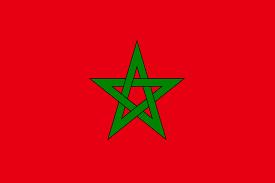Language/Moroccan-arabic/Grammar/Adjective-Agreement
 Հայերէն
Հայերէն Български език
Български език 官话
官话 官話
官話 Hrvatski jezik
Hrvatski jezik Český jazyk
Český jazyk Nederlands
Nederlands English
English Suomen kieli
Suomen kieli Français
Français Deutsch
Deutsch עברית
עברית हिन्दी
हिन्दी Magyar
Magyar Bahasa Indonesia
Bahasa Indonesia فارسی
فارسی Italiano
Italiano 日本語
日本語 Қазақ тілі
Қазақ тілі 한국어
한국어 Lietuvių kalba
Lietuvių kalba Νέα Ελληνικά
Νέα Ελληνικά Şimali Azərbaycanlılar
Şimali Azərbaycanlılar Język polski
Język polski Português
Português Limba Română
Limba Română Русский язык
Русский язык Српски
Српски Español
Español العربية القياسية
العربية القياسية Svenska
Svenska Wikang Tagalog
Wikang Tagalog தமிழ்
தமிழ் ภาษาไทย
ภาษาไทย Türkçe
Türkçe Українська мова
Українська мова Urdu
Urdu Tiếng Việt
Tiếng Việt
| ◀️ Renting an Apartment — Previous Lesson | Next Lesson — Comparative and Superlative Adjectives ▶️ |
Welcome to today's lesson on Adjective Agreement in Moroccan Arabic! Understanding how adjectives agree with nouns is fundamental for anyone looking to master the language. Adjective agreement not only enhances your communication skills but also makes your speech sound more natural and fluent. In Moroccan Arabic, adjectives must match the nouns they describe in both gender (masculine or feminine) and number (singular or plural).
In this lesson, we will cover:
- The basics of adjective agreement, including gender and number.
- Examples illustrating these concepts in action.
- Exercises to practice what you've learned.
By the end of this lesson, you should feel more confident using adjectives in your conversations!
Understanding Gender in Adjectives[edit | edit source]
In Moroccan Arabic, nouns are categorized as either masculine or feminine. This categorization is essential because adjectives must agree with the noun's gender.
- Masculine nouns often end in a consonant.
- Feminine nouns typically end in a vowel, often "ة" (taa marbuta).
For example:
- Masculine: "كتاب" (kitaab - book)
- Feminine: "مدرسة" (madrasa - school)
== Adjective Agreement with Gender
When describing a masculine noun, use a masculine adjective, and vice versa for feminine nouns.
Here are some examples:
| Moroccan Arabic | Pronunciation | English |
|---|---|---|
| الكتاب القديم | l-kitaab l-qadiim | the old book |
| المدرسة الجديدة | l-madrasa l-jdiida | the new school |
| الرجل الوسيم | r-rajil l-wasiim | the handsome man |
| المرأة الجميلة | l-mra'a l-jamiila | the beautiful woman |
Understanding Number in Adjectives[edit | edit source]
Adjectives in Moroccan Arabic must also agree with the number of the nouns they describe.
- Singular nouns take singular adjectives.
- Plural nouns require plural adjectives.
== Adjective Agreement with Number
For instance, when speaking about multiple masculine or feminine nouns, the adjectives must match in plurality.
Here are some examples:
| Moroccan Arabic | Pronunciation | English |
|---|---|---|
| الكتب القديمة | l-kutub l-qadiima | the old books |
| المدارس الجديدة | l-madaris l-jdiida | the new schools |
| الرجال الوسيمون | r-rijal l-wasiimun | the handsome men |
| النساء الجميلات | n-nisa' l-jamiila | the beautiful women |
Combining Gender and Number[edit | edit source]
When combining both gender and number, the adjective must agree with both characteristics.
Here are some comprehensive examples:
| Moroccan Arabic | Pronunciation | English |
|---|---|---|
| الكتابات القديمة | l-kitaabāt l-qadiima | the old writings |
| المعلمون الجدد | l-mu'allimun l-judud | the new teachers (masculine) |
| المعلمات الجدد | l-mu'allimat l-judud | the new teachers (feminine) |
| الأولاد الصغار | l-awlad l-sghaar | the small boys |
| البنات الصغيرات | l-banat l-sghiraat | the small girls |
Summary of Adjective Agreement Rules[edit | edit source]
To summarize, here are the key points to remember:
- Adjectives must agree in gender with the nouns they describe.
- Adjectives must agree in number with the nouns they describe.
- The adjective typically follows the noun in a sentence.
Practice Exercises[edit | edit source]
Now, it's time to put your knowledge to the test! Below are some exercises to help reinforce what you’ve learned.
1. Fill in the blanks with the correct form of the adjective:
- الكتاب _____ (جديد)
- المدرسة _____ (قديم)
- الأولاد _____ (وسيم)
- البنات _____ (جميل)
2. Translate the following sentences into Moroccan Arabic:
- The small book.
- The old women.
- The handsome men.
- The new schools.
3. Match the nouns with the correct adjectives:
- (معلمون) - _____ (جديد)
- (نساء) - _____ (جميل)
- (كتب) - _____ (قديم)
- (أولاد) - _____ (صغير)
4. Correct the following sentences:
- الكتابات الجدي.
- المدرسة الوسيم.
- البنات جميلات.
5. Write sentences using the following nouns and adjectives:
- (كتاب) (قديم)
- (مدرسة) (جديد)
- (رجال) (وسيم)
- (نساء) (جميل)
Solutions to Exercises[edit | edit source]
Here are the solutions to the exercises provided above:
1.
- الكتاب الجديد (l-kitaab l-jdiid)
- المدرسة القديمة (l-madrasa l-qadiima)
- الأولاد الوسيمين (l-awlad l-wasiimiin)
- البنات الجميلات (l-banat l-jamiilaat)
2.
- الكتاب الصغير (l-kitaab l-sghir)
- النساء القدامى (n-nisa' l-qudama)
- الرجال الوسيمون (r-rijal l-wasiimun)
- المدارس الجديدة (l-madaris l-jdiida)
3.
- (معلمون) - جديد (jdiid)
- (نساء) - جميل (jamiil)
- (كتب) - قديم (qadiim)
- (أولاد) - صغير (sghir)
4.
- الكتابات الجديدة (l-kitaabāt l-jdiida)
- المدرسة الوسيمة (l-madrasa l-wasiima)
- البنات جميلات (l-banat l-jamiila)
5.
- هذا الكتاب القديم. (hatha l-kitaab l-qadiim)
- هذه المدرسة الجديدة. (hadhihi l-madrasa l-jdiida)
- هؤلاء الرجال الوسيمين. (hā'ulā' r-rijal l-wasiimiin)
- هؤلاء النساء الجميلات. (hā'ulā' n-nisa' l-jamiilaat)
By practicing these exercises, you should have a better grasp of how to use adjectives in Moroccan Arabic correctly! Keep practicing and soon, adjective agreement will become second nature to you.
Other Lessons[edit | edit source]
- Independent Pronouns
- Give your Opinion
- Possessive Pronouns
- Verbs
- Relative Pronouns
- The verb "To want"
- Alphabet and Pronunciation in Moroccan Arabic
- Demonstrative Pronouns
- Demonstrative Adjectives
- How to Use Have
| ◀️ Renting an Apartment — Previous Lesson | Next Lesson — Comparative and Superlative Adjectives ▶️ |

